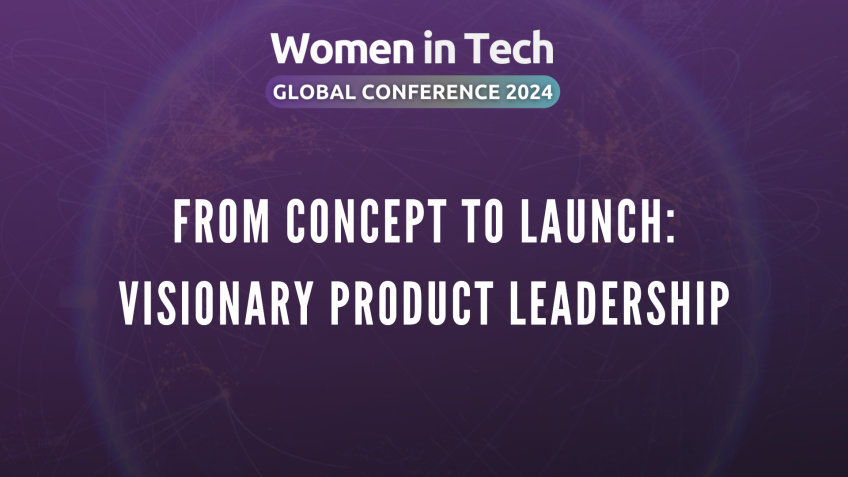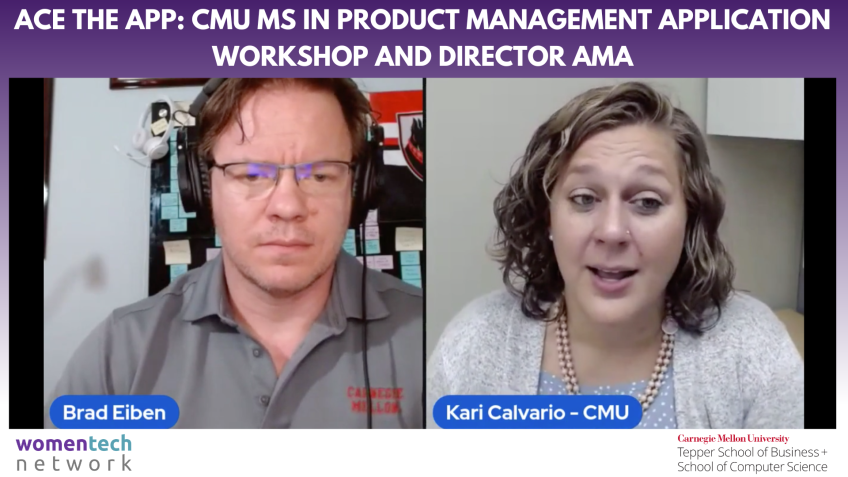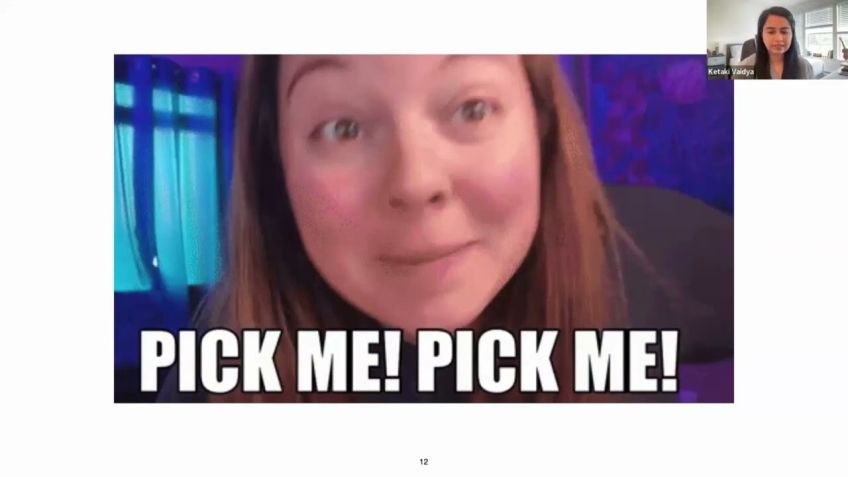Optimizing Your MVP: Balancing Trade-offs and Prioritization Techniques
Falguni Mehrotra
Product ManagerA Deep-Dive into Product Prioritization with Balcony from Expedia Group
Hello everyone, this is Balcony, a Product Manager with Expedia Group. Today, I'll take you through an enlightening session on product prioritization. I’ll explore why prioritization matters and how it can save you time and effort, focusing on various processes and techniques for effective prioritization.
What is Product Prioritization?
Product Prioritization (PRID) is a process that involves carefully assessing product features to determine their order of implementation based on factors such as their value to customers and the effort needed to implement them. Surprisingly, a lot of people seem to resist PRID —mainly because they perceive it as a time-consuming activity. However, prioritization can save us more time than we imagine by reducing fallbacks and increasing confidence. So, let's dive in!
Why is Product Prioritization Essential?
There are many reasons to prioritize the product development process. Prioritization saves time, reduces fallbacks, increases ROI, and adds value to the product you build. To illustrate, let's consider a product that takes 20 days to launch. With prioritization, although it might take a few more days, the confidence level soars to 95%, leading to fewer days of fallback.
Understanding Tradeoffs and Prioritization
Product Prioritization is essentially about understanding trade-offs and deciding what gets done first and what comes later. It requires careful consideration of various factors, including the level of impact each feature will have and the effort it requires. Let’s explore different prioritization techniques to better illustrate this concept.
Prioritization Using the MoSCoW Technique
The MoSCoW prioritization technique categorizes features into four buckets: Must-haves, Should-haves, Could-haves, and Won't-haves. Now, let’s consider a ride share app example to work through this technique:
- Must-haves : Booking a ride option, User registration and Login.
- Should-haves : Payment options, Record trip history.
- Could be-haves : Real-time tracking of the driver, preferred driver option, Multiple drop-off locations, the drivers’ review and ratings.
- Won't-haves : Multiple payment options (since there’s already one payment mode in place).
Calculating Prioritization using Impact, Reach, and Effort Factors
Another useful technique is to calculate prioritization using 'Impact', 'Reach', and 'Effort' (IRE). Additionally, we consider the 'Dependency' of each feature. The final score, derived from summing up the values for IRE and dependency for each feature, forms the basis of prioritization.
Bringing it all Together into a User Flow
By employing the prioritization techniques, we can outline the user flow for the MVP of the ride share app. The user starts by registering and logging in, then books a ride, makes a payment, and finally, their trip history is recorded. This process reveals that from an initial ten features, we narrowed it down to four critical ones to build an MVP.
To sum it up, product prioritization saves time, delivers high value, reduces development time, and mitigates risk, proving itself a vital part of the product cycle. If you have any more questions or wish to learn more about the other aspects of the product cycle, feel free to reach out to me on LinkedIn. Thank you!
Video Transcription
Hello. Oh, yeah, hi, everyone. This is Balcony, um, product manager with Expedia Group, um, uh, here and thank you so much for, uh, for prioritizing this session from your busy schedule. And, um, yeah, before I kick off all that, I would like to tell you about me.I love building product and I am from, um, like from last 78 years, I am into like, um, doing and solving others and customers problem. Um, before I start the session, I really want to talk about a couple of things that I heard about the pride organization. Uh, and, um, I really want to talk about like what PRID organization, um, does and then what people talk about when I just simply ask, um, did you PRID it or how do you do? How do you PRID the things? And then I heard is like pride. No way. We don't have much time to do the PRID organization. We have like couple of things and, um, couple of features and the products that need to be, go live. You don't want to waste time on PRID organization and that takes most and most of the work. Um, but if you can see that privatization actually takes less time and I'm gonna walk through the whole of the, the whole of this whole session about like what we'll be talking about and how you're gonna save time with the pride. So basically, before I just start with the product and then hold that organization, I really want to um know that uh how much um how many of people like you, you actually like, you know, product. So what product is and what that mean?
Um For me, it's like building up the product uh is solving customers problem. So the whole cycle that goes over is like mission and vision. And then you take personas the users and then you look for your problems and then you look for features and then start to move to the MVP. Uh and then look for matrix if it's going good not. And then you change your approach and then sometimes you do the go to market strategy too. But the thing is there are a couple of things that comes into the PRID organization that I'm gonna talk about is tradeoffs and PRID organization. And what are the ingredients for the PRID organization? And how you can use those ingredients to actually build up the good techniques and also implement that to the end to Android map and the whole MVP. So to answer the question to those who actually talk about the privatization has uh have take a lots of time, I would say that why it's more important is because it gives the high confidence on the product that you are building. And also it gives the more rate of interest and then have more value. Uh Along with that, there is a less fallback options. Uh along with there is a reduced time, how the, how the time is reduced. Um I'll give you an example.
As you can see the chart below, there are, there's one product that takes 20 days as a lunch time. So with prioritization, you have 95% of the confidence and with that, you're gonna have just one day of fallback, that's basically 5% of 20 days. And when you talk about no privatization, which is, which is like just 70% of the confidence, it means 30% of the 20 days or six days. So before though, you, you, you wanted like no privatization initially and then that zero days that adds up the six days. But if you're gonna use the three days of the pride that actually just add up one day and that's also not necessary. So this is about the if you have a 20 day of product launch. So basically, you don't see that time difference, but it actually happens while we do the PRID organization next. Before I talk about like how that privatization techniques go. I really want to um talk about uh like what that um what that specific uh, tradeoff and ties mean and how you can actually do it. Um, well, I cannot see the chat here. Um, see. So, uh, basically if you're gonna talk about that tradeoff on Fridays, but you can just like, tell me the answer in that way. Like you have two options if you wanna dump the trash anywhere or you wanna dump the trash in trash cans.
So what you like the most, um, and obviously you're gonna dump the trash in the trash can and that seems like more impactful to the customer. Now, the other question that I will raise is like, how you gonna, so if you have the fish food, where you gonna put, you have the bunch of fish in the pond and then there is a one pond that has like turtles, fishes and rest of the things. So how you gonna, how, which pond you're gonna choose to put the food on? Yes, obviously the pond with a lot of fishes because that we're gonna have more um, use of that particular food. Similarly, if you're gonna have, you have to make rice and you're gonna use the rice cooker or you're gonna use the pan to make rice. So it seems like more as a rice cougar because all gonna take less effort. So basically, this is how the tradeoff happens that you have to look where the impact is, where more the food is and what's the, um, what's the food it is and this is what the tradeoff is like. You have to choose one. And what is the PRID organization that actually the tradeoff um comp uh trade off part that leads to the price as you can see the couple of examples here. Um You are a publisher and then you have to book, publish a book for students.
And also you have to publish the book for the writers. How you're gonna choose though? You are a publisher, you have to do both but how you're gonna PRID one over other. Um And then you, if you'll take a example of your host uh house stuff and then household stuff, you, you have a daughter or you have a uh your kid that is sick and then also you have important office work as well or a meeting, how you gonna prior it you have to look like which is more important.
And then you're gonna say, OK, we're gonna take to the, to the doctor first and then we're gonna complete my office work. And similarly, if you have the cooked food and then clean house and like if you have a party at home and then how you're gonna prior on it. So this is called like you have to choose both but complete in a sequence. And that's a prioritization and how you're gonna choose. It is like depends on multiple factors. And I'm gonna talk more about like how those techniques will work um Just talking about the techniques sometimes that won't work for people. Uh So I'll take one example to run through so that it'll be easy for you to use those techniques to um to the um to a couple of um uh to your pro whenever you are doing the privatization or building MVP or uh building new product. So let's take an example to move um to help moving people across the world. That's the main goal of the company, let's say company ABC. And now if they want to create a new product, how they're gonna choose. So I have a couple of options that I brainstorm, um I can have the tourism and travel company or I can have the rideshare app where anyone can be the writer or driver both or I can have a product to help people to rent their car to others or rent a car from them.
And also I have like online food delivery services. So you might be thinking about why online food delivery services can be into um this particular goal, but this basically also moving people. But the main goal of online food delivery is basically moving food and not the people.
And if I look at the tourist and travel company and try to help people to rent their car, this is more like having constraints uh that they are fixed and you, you, the people are not open to it and then there are little constraint that the person in the plot in the, if they have to rent the car, they have to like uh look, maintain the car and then also um have to be in that business and then also have to be uh on that particular time.
And that doesn't make sense to all of them that they're gonna help people to move. And if I talk about tourism and travel company there, you need lots and lots of investment in that. And uh for being the MVP, you don't want to invest a lot of things. So that's why I just move. I did the tradeoff and then choose the right share app where anyone can be the writer or anyone can be the driver um are both and they can just move people at their time and they're gonna have more people with the less investment. Next is we're gonna talk about the privatization. So there is a technical Moscow rule, uh which means must have, should have, could have and won't have. And um with that perspective, uh you have, must have requirements means you really need the requirements um that is required for, for creating the MVP um should have our, do those requirements that basically um is dependent on the must have and needed for the application. Uh The other thing is like they could have um which is nice to have but uh it's not needed as in, but it's good to have that.
And then we're gonna have the won't have, it means it doesn't mean that you do not need it, but you do not need it for the MVP and can be prioritized later on as per the market and as per the customer needs. And as I just talked about the ingredients, they are negative the these four buckets along with the feature list that I put together at the top. Um Let's apply the Masar rule. And then this shows like, ok, we have booking a ride and registration and log in. These two are the main uh feature that needs to build up for the MVP because this is how uh people were gonna book a ride and then uh and then um move from one place to another and then there are other features that might not need it, that might need it, but that's are majorly dependent on the must have requirement.
For example, the payment option, you can do the payment by cash too, but that's a good option to track it along with the record trip history at packet. We don't need to do it, but still we have, we should do it because in case there is a problem at the end, we can actually look for those trips and then actually resolve customers problem. So this is how the bucketing happens for must have and should have. Um Next is they could have like nice to have options as you can see. Uh real time tracking of driver or um preferred driver, multiple drop off locations, driver review and ratings. So these are nice to have, uh, but it's all depend on the uh need and also the budget that do you want that to be incorporated in MVP or not? And then the seventh is the multiple, like the other one tab is the seven features like multiple payment options that's like not needed because we already have one payment mode and we can pay by cash too. So it's basically having multiple payment option. It's not needed now, but we can have that later too. So here is the technique to um to create the calculated privatization.
Uh Here I took the must have and would have requirement and uh read them on the basis of um impact, read and afford impact is the impact. You were gonna look at the customer level like how big is the impact uh to the customers. And you can say that it's low, medium or high, low as in 13 as in like medium as in three and high as in five. So you're gonna see impact reach and a third. Um the ideal product or ideal situation will be high impact, high reach and less effort. Um So that's why I just put that five as in low effort. That's in words of impact and reach. I put the numbers here for just like to save the time. But this is how I did um let's take a book a ride for now or later. This basically give a major impact on the customer because this is what everyone wants. Similar to reach, reaches like how many customers need? This is just one or it's like hundreds. So you need to figure it out. It's like 90 or 80% plus customer, they need it. It's five. But if it's between um uh 30 to uh 80 then it comes under three. But if it's like below 40 or 30 it goes as in one. So, but here like everybody seems like everybody need it. And then that's why I just said five. And then from the perspective, we can connect with the technical team or anyone architect that can help you with the effort. And here I just said three as a medium effort.
This is what I did for the registration, login, payment mode, record type and history. The other thing is the other factor as you can see that the dependency. So let's say if book a ride has the highest impact, but maybe this is dependent on something else, right? And then you cannot pride just on these factors. So how I calculated the dependency is basically keeping all those feature at the left and the top and then measure and asked the question like does book a ride for now later can be booked without registration and log in. And I was like it. No, it cannot be it's dependent on leg registration and log in because um if the person register or log in then only he can book a ride. So basically this feature is dependent and then if it's dependent, it's one if it's not did it five. And this is how it's all feature a map with the other feature. So if you can see payment mode, which is actually dependent on everything, it's dependent on booking a ride, it's dependent on the registration. Um but it's not dependent on the record trip like sorry, yeah, record trip history is basically dependent on everything because as soon as the person book a ride, register, book a ride and then pay till then the trip history won't be maintained.
So this is how um the trip history is like dependent on each other and just calculating all that summing up and then putting it here. So let's sum up all those points for the future. And this is we got, we have 22 and then we have 21 and then um for the payment mode, we have 16 and then record history four. So basically for me though, we looked at that registration login is the first thing to work on, but seems like that's the second one as per the priority ranking. So this is how the MVP and then the thought process changes. Um uh But, but while doing the calculation and while actually looking at and assuming at whatever is in your mind. Um And then let's talk about uh that could have uh features because I'm not taking the one half features. So four could have, I did the same, I had the uh impact reach and four in that way. Um that as you can see um and have the dependencies on it and also um have um uh the calculated portion. So here you can see the sum is 24 and 26 as in driver review and rating multiple drop off location is 20 then trip driver is 22.
So if you're gonna have the ranking on it, you'll see the driver review reading uh seems like a good portion of uh the pointers because it has the highest impact though. Everybody don't, not everybody wants it, but it is like it, it's, it's almost like more than 40 50 person really need it. And then it also helps the person who is a driver and customer both and then similarly with effort, it's medium and then those dependency are equal to each other because they are not dependent to each other. That's why it's all 555 and that comes 15 and then, then I took the sub sum sum and then it has the ranking of 1234. So this is how you can like do the privatization of selecting those features. Um So as you can see from the um from the privatization, we were gonna do the register, the customer will gonna do the registration and log in, you're gonna book a ride and then pay for that and then the trip history is recorded. So this is how the whole user flow we gonna work after the MVP. So if you're gonna look at initially, we we jot down like almost 10 features, but now we have like just four features in the MVP.
So this is how the privatization helps uh in saving the time. And also as we gonna have the calculated effort, we know like how many customer needed, what does the impact, we know what's, what exactly the route and what exactly the product that we need to build up. This is how it saves time, it gives the high volume and then um this also reduce time in the development and also reduce time later on when we look for the fallback option. If there is any loss in the matrix. Yeah, any question and answer any questions that I can help with, you can actually message me or connect me with on linkedin and uh I'll be able to um help you with the answers. Um They'll, we are running out of time but, and then uh yeah, so this is how um yeah, you can just reach out to me on linkedin. I'll happy to help you with how that other part of the product cycle will work. And also we'll more talk about the privatization Um Yeah, thank you so much.






